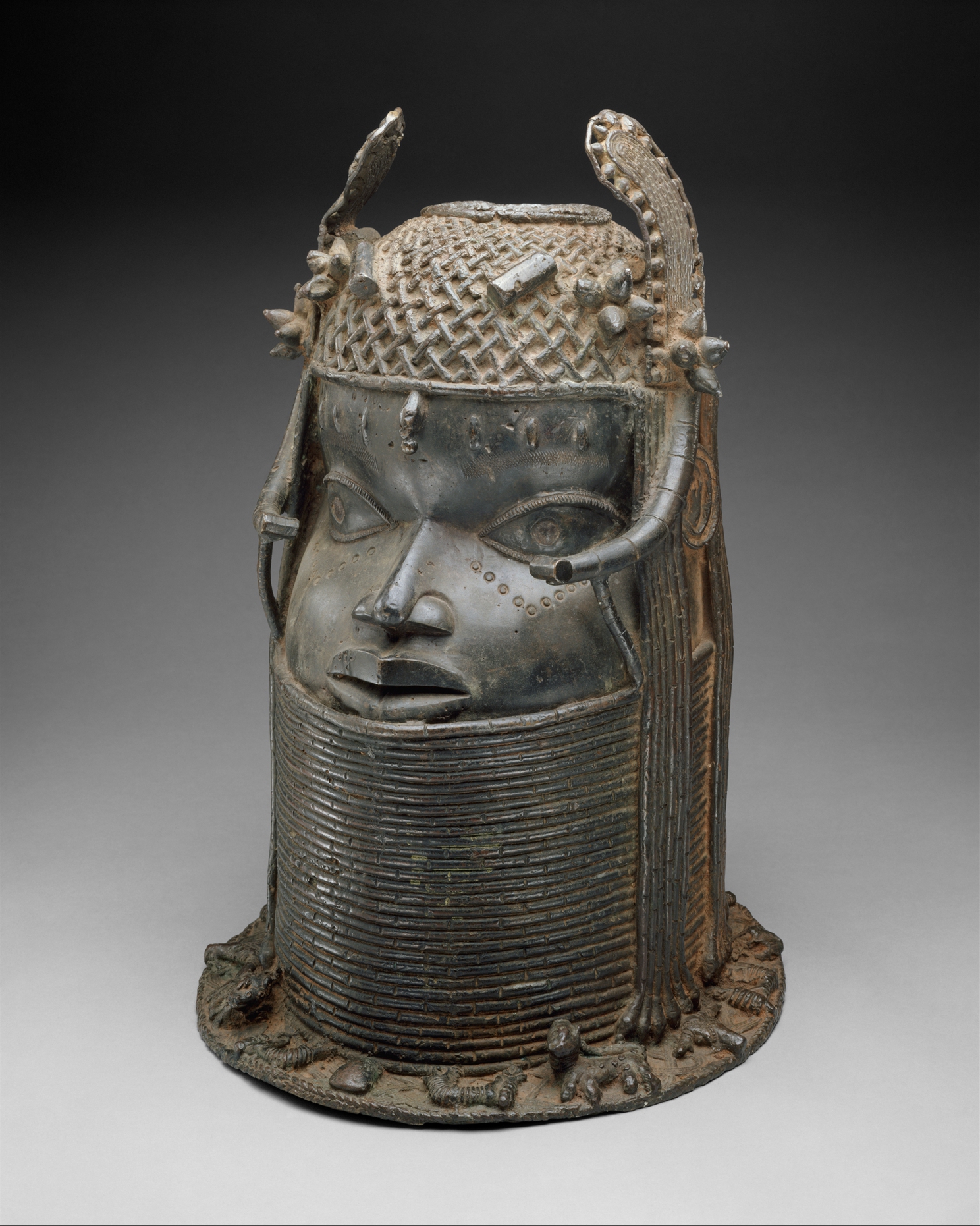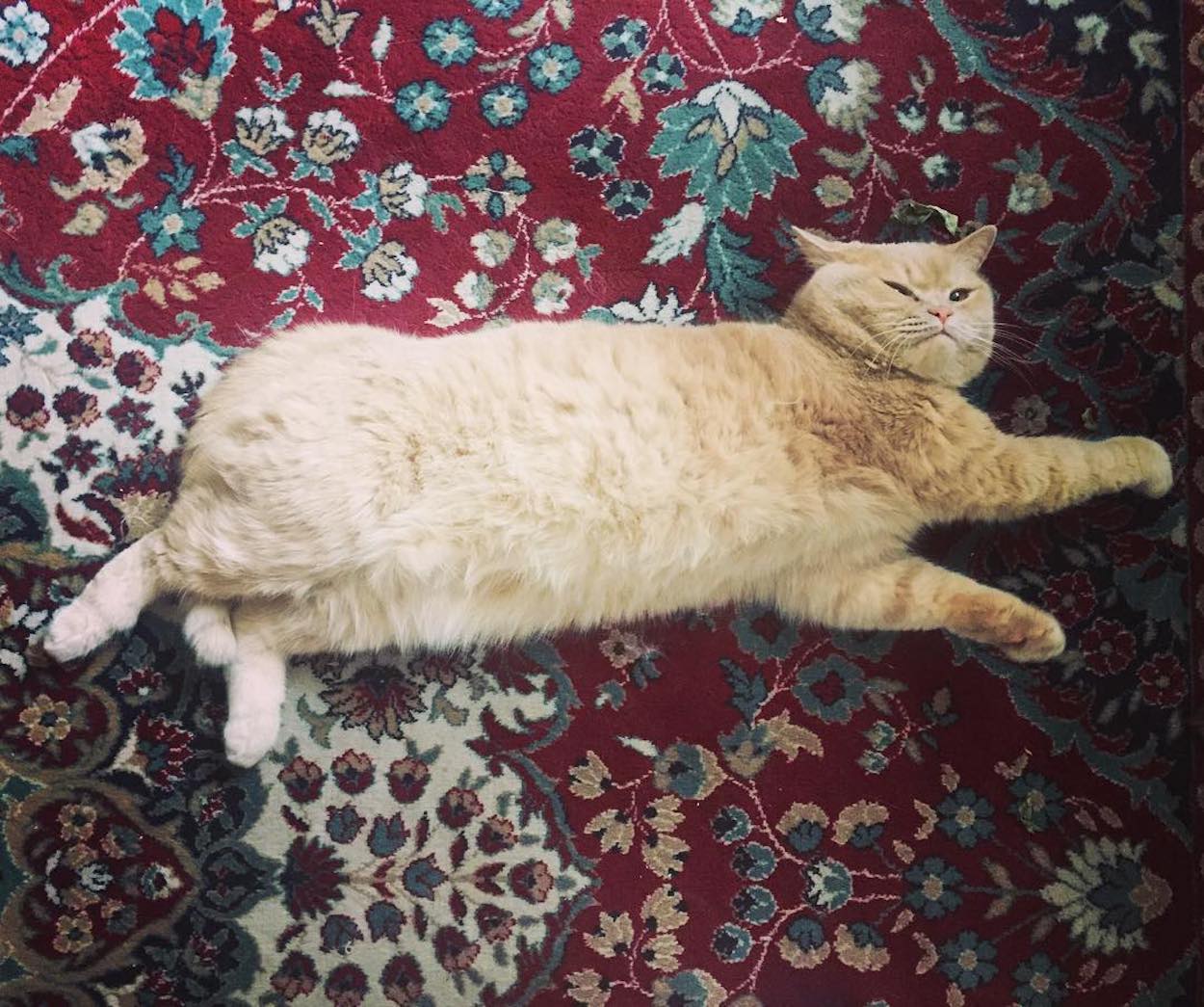The Kingdom of Benin, also known as the Edo Kingdom, was a kingdom within what is now southern Nigeria. It was one of the oldest and most developed states in the coastal hinterland of West Africa. It grew out of the previous Edo Kingdom of Igodomigodo around the 11th century AD and lasted until it was annexed by the British Empire in 1897. Today we present a piece of art very characteristic for Edo's art—the brass head.
This commemorative cast-brass sculpture depicts the idealized likeness of an oba, or king. The youthful face is round and rendered with an extreme degree of stylization. The swollen cheeks and enlarged eyes, the size of the flange at the base, the weight of the casting, and the winglike projections attached to the crowns are characteristic of brass casting during this later period of Benin royal court. This sculpture would have held a place of honor on an altar in the palace of the king.
The obas of Benin trace their origins to a ruling dynasty that began in the 14th century. The title of oba is passed on to the firstborn son at the time of the ruler’s death. The first obligation of the new king was to create a shrine, dedicated to his predecessor and serving as the site at which the living monarch communicated with his ancestor or father. Ensuring dynastic continuity, the shrine held various carved and cast artifacts, including freestanding brass heads such as this one. The head acted as a vessel through which the late king transferred his power to the new king, the latter accepting the responsibility for successfully directing and defining his life. The Edo people considered the head to be the locus of a man’s character, knowledge, authority, success, and family leadership. These sculptural heads were a consistent visual point of reference from ruler to ruler, reinforcing the idea of familial succession across a single dynasty. The oba is often called by his praise name “Great Head,” emphasizing the head of the living leader as the center of responsibility for the kingdom.
The obas of Benin trace their origins to a ruling dynasty that began in the 14th century. The title of oba is passed on to the firstborn son at the time of the ruler’s death. The first obligation of the new king was to create a shrine, dedicated to his predecessor and serving as the site at which the living monarch communicated with his ancestor or father. Ensuring dynastic continuity, the shrine held various carved and cast artifacts, including freestanding brass heads such as this one. The head acted as a vessel through which the late king transferred his power to the new king, the latter accepting the responsibility for successfully directing and defining his life. The Edo people considered the head to be the locus of a man’s character, knowledge, authority, success, and family leadership. These sculptural heads were a consistent visual point of reference from ruler to ruler, reinforcing the idea of familial succession across a single dynasty. The oba is often called by his praise name “Great Head,” emphasizing the head of the living leader as the center of responsibility for the kingdom.
P.S. Check out the art treasures from the African Kingdom of Benin here, they are amazing!
P.P.S. Dear DailyArt users, on May 10th, we will release the brand new and shiny DailyArt app! :) The new version brings one massive change, the subscription model. It means that if you buy the Premium version of the app after May 10th, you would need to pay a monthly or yearly fee for Premium. So, if you see the "Upgrade to Pro" button below, please buy it now with a one-time fee and enjoy Premium forever! (If you don't see the button, it means that you are already Premium.) :)


 Unknown Artist
Unknown Artist